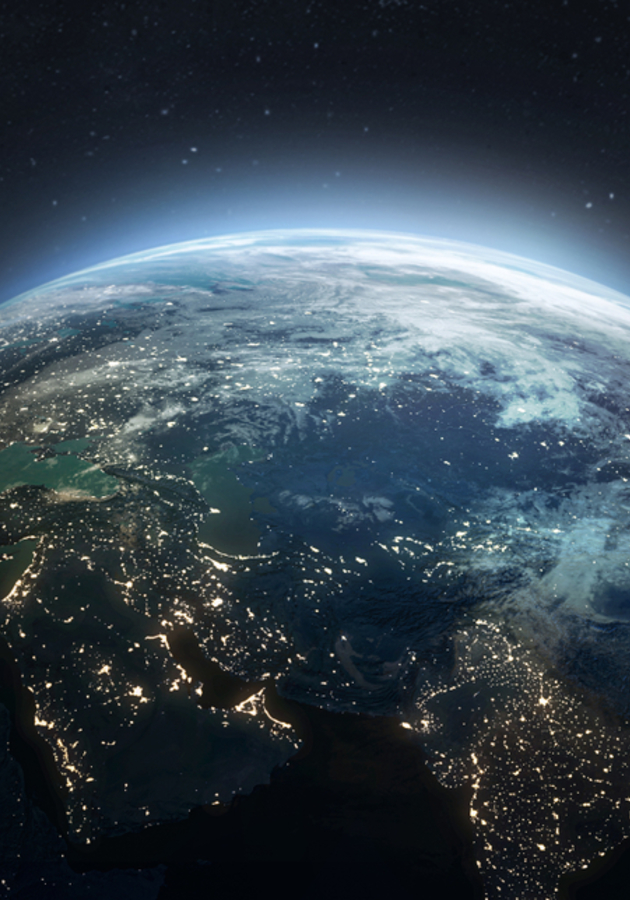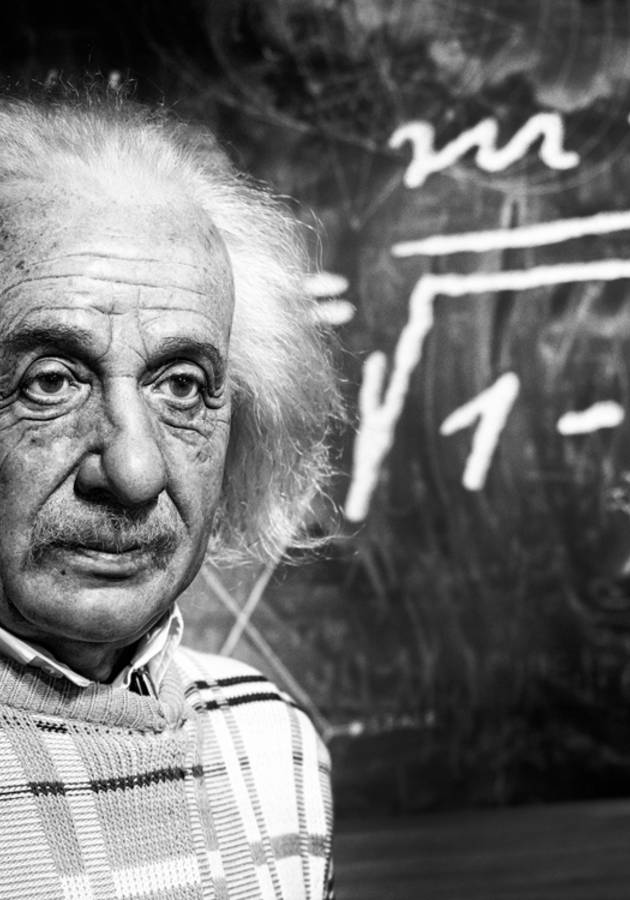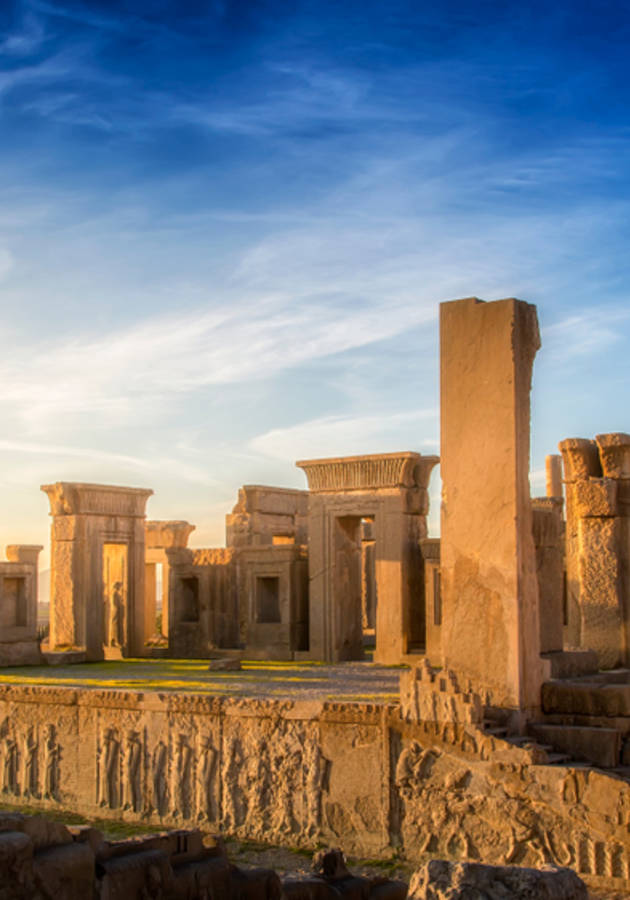“Those who cannot remember the past are condemned to repeat it,” wrote Spanish-American philosopher George Santayana in 1905. More than a century later, his words – though still as accurate as when they were first published – have been mellowed down to a cliché, a platitude, a popular but rarely applied aphorism.
In the opinion of American diplomat Richard Nathan Haass, that needs to change. “An increasing number of young people in the United States and elsewhere are essentially uninformed about the world they are entering,” he bemoans in the preface to the simply-titled “The World,” a 400-page primer on history and politics, whose humble objective is to provide the basics of what one needs to know about the past and the present of the modern world.
Allow us to focus primarily on the past and get ready to become “globally literate,” so that you can “build a foundation to better navigate the headlines and filter the flood of news.”
The need for global literacy
A recent survey of more than 1,100 American colleges and universities revealed that only 17% of them require students to take courses in U.S. government or history, and only 3% require them to take coursework in economics. Even more frighteningly, less than a third of the top American colleges and universities require history majors to take a single course in U.S. history or government! As a result, grumbles Haass, “it can be possible to fulfill an American history requirement without learning about the American Revolution or the Civil War, or to satisfy a world history requirement without understanding World War II or the Cold War or, more fundamentally, why the world matters and how it operates.”
The extent of the problem became obvious to Haass one summer day over a decade ago when he went fishing with a good friend of his in Nantucket. The two were joined on the boat by the friend’s nephew, a Stanford computer science major, soon to begin his senior year. A quick series of questions awoke Haas to the realization that his friend’s nephew had neither taken too many courses outside his major nor was he particularly interested in history, politics, or economics. Put otherwise, that intelligent young man was about to graduate from one of the best universities in the world, “with little or no understanding of his own country or the world.”
Many other Americans – in fact, almost 40% of those with a high school diploma – don’t even graduate from a college or a university. Still more – approximately one-third of Americans – end their education with high school, where courses on global issues or international relations are not even offered, let alone taken seriously. All in all, too many Americans know too little about their own country and even less about the world outside it, despite the fact that the United States has been “the world’s principal architect as well as its general contractor” for the past 75 years. The best way to start changing that is by providing a brief overview of modern history.
1648, the year modern history began
For all intents and purposes, modern history began in 1648, when the Treaty of Westphalia brought an end to the highly complex Thirty Years’ War, in which between five and eight million Europeans lost their lives, the majority of them from disease or starvation. Most historians consider the 1648 peace treaty a turning point in Europe’s ability to live with religious and cultural diversity and see it as the basis of the modern state-nation system. Before the treaty was signed, the continent was nothing more but “a patchwork quilt of empires and small kingdoms,” regularly at war with each other over territory and power. Afterward, empires and principalities were supplanted by self-governing countries respecting one another’s independence.
The shift was made possible by one major political innovation introduced by the Treaty of Westphalia: the concept of sovereignty. This concept, as Haass explains, had three basic dimensions: “First, countries should accept the borders of other countries and not use force in an attempt to change them. Second, countries should not interfere in events inside other countries. Third, governments should have a free hand to do as they please within their own borders.” These three notions – self-government, non-intervention, and the legal equality of states – represented a major step toward European stability and peace, but they also set the scene for new kinds of conflicts, far bloodier and more destructive than the Thirty Years War had been.
Even so, in more ways than one, the Treaty of Westphalia established the modern state system, so much so that the phrase “Westphalian sovereignty” is still used as a shorthand for the basic legal principles underlying international relations. Nevertheless, many of these principles have been challenged during the past century, first by the two great wars, then by the very existence of the two major blocks during the Cold War era, and finally, by globalization. But we’re getting ahead of ourselves.
From the Treaty of Westphalia to World War I
If the year 1648 can be taken as a convenient starting point for modern history, the period after can be provisionally divided into four major historical eras. The first is, by far, the longest, covering roughly three centuries and spanning all the way to the outbreak of World War I in 1914.
As already noted, the Treaty of Westphalia introduced a period of relative peace in Europe. The absolute rule of monarchs such as Louis XIV in France, Peter the Great in Russia, Maria Theresa in Central Europe and Frederick the Great in Prussia produced stable centralized states which facilitated trade and commerce, inspired exploration and colonialism, and stirred the Industrial Revolution.
Generally speaking, there wasn’t a major war in Europe until the rise of Napoleon Bonaparte, whose military victories animated the continent for the first 15 years of the 19th century. His defeat at the Battle of Waterloo in 1815 led to a peace settlement “designed to prevent France from threatening its neighbors and to make it more difficult for revolutionary movements to overthrow the unelected governments of the day.” This settlement, agreed upon during the famous Vienna Congress, lasted until the eve of World War I, but it ceased to play a meaningful role already around 1871, when Otto von Bismarck unified most of the German states into the German Empire.
Meanwhile, across the Atlantic Ocean, after declaring its independence from Britain, the United States were evolving into a great international power. In 1853, in search of new markets, American warships forced an end to Japan’s centuries-long policy of isolation. The event triggered a series of reactions which eventually led to the modernization of the Land of the Rising Sun. The other Asian superpower, China, wasn’t as fortunate: an influential trader at the beginning of the 19th century, the country suffered heavy losses to foreign colonialism during the Opium Wars, and entered the 20th century economically weak and internally divided.
From World War I through World War II (1914-1945)
On June 28, 1914, Gavrilo Princip, a 19-year-old Yugoslav nationalist, assassinated Austro-Hungarian heir Archduke Franz Ferdinand in Sarajevo, sparking a global war which led to the mobilization of more than 70 million people and the death of more than nine million soldiers and tens of millions of civilians across the globe. Within a month of the assassination, the world was divided into two big coalitions: the Triple Entente, consisting of Britain, France, and Russia, and the Triple Alliance of Germany, Austria-Hungary, and Italy. Later on, Japan joined the Entente, as did the United States in 1917. That same year, Russia withdrew from the coalition to focus on the communist revolution happening inside its borders. In the meantime, Italy switched sides and emerged from the war as one of its biggest victors.
World War I ended in November 1918 with the defeat of the Triple Alliance. As a result of the war, four empires – the German, the Ottoman, the Russian, and the Austro-Hungarian – ceased to exist. In their place, many new countries were created, as was the League of Nations, an intergovernmental organization intended to maintain world peace. Unfortunately, it started off on the wrong foot: the peace agreement that ended World War I, the so-called Treaty of Versailles, was a “Carthaginian peace,” as it was unduly harsh toward Germany.
The treaty stripped Germany of many territories and tasked the country with paying severe military reparations to the victors, all the while forcing it into economic hardships and austerity programs. Coupled with the effects of the Great Depression of the 1930s, this led to nationwide disappointment and the rise of extreme nationalism in Germany, which culminated with Adolf Hitler becoming the country’s chancellor. Similar things occurred in Japan, Italy, and Austria, and in 1939, just two decades after the Treaty of Versailles, another world war erupted in Europe.
World War II proved even more lethal than its precursor, resulting in more than 80 million fatalities. It was brought to an end shortly after the United States dropped nuclear bombs over the cities of Hiroshima and Nagasaki in August 1945, the first, and only, wartime use of atomic weapons. The gruesome event put an end to the deadliest three decades in all of human history and ushered the world into the Cold War, a 40-year geopolitical conflict between the Soviet Union and the United States.
The Cold War (1945-1989) and the post-Cold War era (1989-present)
In many ways, the term “Cold War” is a misnomer: the geopolitical competition between the Soviet Union and the United States – the two superpowers that emerged from the ashes of World War II – never descended into a violent conflict, at least not directly between them. That’s why, in other ways, the term “Cold War” is the perfect description of what happened after 1945. Due to a precarious balance of military power and mutual fear of a nuclear exchange, the confrontation between the U.S. and the USSR was largely ideological. While the United States was a democracy that (at least, in principle) respected individual rights and favored a large role for free markets, the Soviet Union had a totalitarian polity and a centrally planned economy.
In 1949, fearing a Soviet attack, the United States created the NATO military alliance. In response, just six years later, the Soviet Union formed the Warsaw Pact. While the Soviet Union funded communist parties and revolutions throughout the world, the United States financed right-wing governments and uprisings to prevent the Soviets from expanding their sphere of influence. The tensions led to numerous crises throughout the world, including the Korean War, the 1961 Berlin Crisis, and, most notably, the 1962 Cuban Missile Crisis which almost escalated into a full-scale nuclear war. Fortunately, that never happened. Instead, what happened was something few could have predicted in the midst of the Cuban crisis: in late 1991, after years of economic stagnation, the Soviet Union collapsed, marking the end of the third major period of modern history.
The fourth and final period began about then and has so far been marked by democratic consolidation in many countries, but also by the Rwandan and Iraqi wars, the bloody dissolution of Yugoslavia and the 9/11 attacks. It is still too early for us to know how this period will be remembered by future historians, but Haass is not particularly optimistic. Fearing a Sino-American Cold War, he predicts either an era of Chinese primacy or, more likely, a period of “accelerating global disorder,” one in which no country or group of countries will be able to exercise effective global leadership. This sounds all the more frightening in view of the fact that many of the challenges we now face – such as climate change, terrorism, cybersecurity, world health, migration, and inequality – require acknowledged global leaders and internationally coordinated responses.
Final notes
“The World” by Richard Haass is nothing more (nor less) than a primer on global literacy, “amounting to International Affairs 101,” as one reviewer has aptly noted. In other words, there’s really nothing in the book that would come as new knowledge to an informed reader, but it offers the uninitiated a great overview of “the ideas, issues, and institutions” essential for a basic understanding of the modern history of the world.
To quote Indian-American political commentator Fareed Zakaria, it is “a superb introduction to the world and global issues.”
12min tip
“For better and for worse,” writes Haass, “the so-called Vegas rule – what happens there, stays there – does not apply in today’s global world.” In other words, the more you know about other countries, the more you will know about your own. And the more you know about both, the more you will know about yourself.





























